
|   |

|   |
Bhavaye Paramatmanam: Classical strains for AIM for Seva - Dr. Nita Vidyarthi e-mail: nitavidyarthi@gmail.com December 22, 2020 In an effort to keep the arts alive for artists, teachers and connoisseurs during the unending days of the pandemic, the performing arts scenario in the digital platform is flooded with productions, especially dance. The quality streaming is often run-of-the-mill and does not rise above mediocrity. In this scenario it was heartening to witness eminent musicians and dancers come forward in the humble offering of a rare concert of music and dance entitled 'Bhavaye Paramatmanam' to mark the 90th Jayanti of Swamiji Dayanand Saraswati and the 20th anniversary of AIM for Seva. The profound thinker's words "Bhavaye Paramatmanam" are the first two words of a composition that extol the spirit of Swamiji affirming the divine nature of everything on earth -'Manifestation of Divinity', the part of the title that "all that is here is Ishvara." And this became the starting point and inspiration for the unique virtual concert. As one of the most profound thinkers and teachers of Vedanta, Swami Dayanand Saraswati believed in the power and potential of the arts to transform the self and the world around. His belief that the arts had the innate ability to allow the human beings to connect with their inner self and find abundant joy resulted in the designing of the concert with seven accomplished artistes. It did not in the process arouse bhakti in the real sense but realisation of the omnipresence of the divine laced with spirituality through their sensibility, imagination and creativity to interpret and distill the essence of Bhavaye Paramatmanam, the all-pervasive "Ishwara" armed with their respective classical arts soaked in the rich heritage of India.  Shankar Mahadevan With the refrain of the title number, the promo song by Keerthana Vaidyanathan and Amrit Ramnath, began the unrelenting exploration of 'Manifestation of the Divine' in Shankar Mahadevan's invocation "Suranira gasa ho" from the Marathi film Katyal Kaljat Ghusli - a Ganapati Vandana penned and set to music by the singer himself. The depth behind this devotional number was a reminder that sur and sadhana must be honest, innocent and devoid of feelings of envy. Shankar Mahadevan began with great aplomb in his full throated voice and offered a glimpse of Ganapati Vandana in "Ganapati Subhanayana Karunamaya Gauri Varadavinayaka..." invoking the Lord through an offering of a humble prayer with his musical creativity. His brilliant high notes were of magnificent flexibility and volume tinged with articulate resourcefulness by Purbayan Chatterjee's sitar and Ojas Adhiya's tabla. 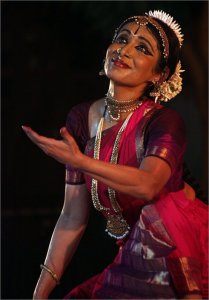 Alarmel Valli Alarmel Valli's offering of the Pandanallur style of Bharatanatyam has a rare distinction of quality, style and classicism that makes her rendition chaste and always a vehicle of beauty and therefore always a privilege to watch. To make an impression in the times of pandemic when there is rampant disregard of nature and the world is fractured and fragmented, she choreographed two verses on her own interpretation of 'Bhavaye Paramatmanam' stimulated by her observation of the society and the world that embody the concept of divine as all pervading. She began with the benediction from Kalidasa's Abhijnanashakuntalam where Prakriti is invoked as god, her execution being not meager step vocabulary and her expressive eyes not limited to the lyrical but none the less real. In the moving poem "Vellai tamarai" by Subramanya Bharathi, the brilliant visual imagery to the original verses depicting Goddess Saraswati residing in the music of the veena, song of the koel, parrot and children's prattle were harnessed with appropriate emotions and movements constructed entirely from recognizable classical Bharatanatyam each cued to the musical rhythm. The dancing, in effect, the very mental sensations produced by rhythm and sound variously juxtaposed and combined with brilliancy of rendition was music to the eye! Valli's evocation of the 'title' celebrated the essential oneness of the universe through her magnificent dance. Vocal and music composition by Bombay Jayashri Ramnath, nattuvangam by C.K. Vaidyanathan, mridangam by Sumesh Narayanan and Shaktivel Muruganandan with violin by K.P. Nandini and flute by Shruti Sagar flavoured the unforgettable performance. 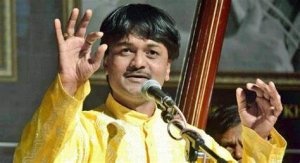 Jayateerth Mevundi Showering dazzling cascades of patterned phrases, vocalist Jayateerth Mevundi traversed seamlessly between two languages - Marathi and Kannada - in interpreting the title powerfully through music and philosophy (the Vedas). With his lungs fully extended accelerating dramatically the word "Keshava", Jayateerth offered the abhang "Ek baar Pandari padharey" that reinforced the idea of visiting Pandharpur at least once in a lifetime to experience the existential quest of visiting the lord. The number showed a warm regard for the structural logic of both the words and the music. The Kannada song "Saku saku manoja seva virhu" was similar in thought and aspiration that it's time for realization to surrender to god. The recital turned out to be a rich aural treat with the excellent accompanying artists - Pravin Godkindi (flute), Ganesh Gunkal (tabla) and Satish Bhatt (harmonium). 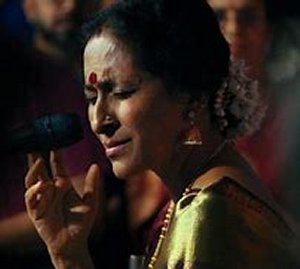 Bombay Jayashri Ramnath Bombay Jayashri Ramnath offered an emotion filled Tulsidas bhajan "Gopala Gokula Vallabhi" that is very close to her heart, set to tune by none other than the legendary Dr. M. Balamuralikrishna. Pujya Dayanand Saraswati was fond of this song and would request Jayashri Ramnath to sing it. Her mellifluous and articulate rendition with the able support of Sayee Rakshit (violin) and Sumesh Narayanan (mridangam) could not have been a better choice and would have made the live audience join in spontaneously. 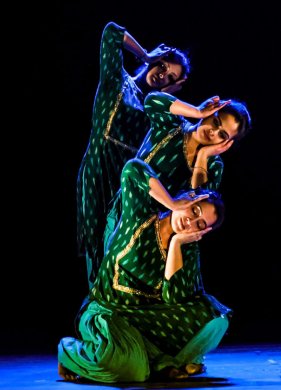 Prana 'Prana,' an excerpt from the production 'Niravadhi' conceived and choreographed by Kathak dancer Debashree Bhattacharya and performed with co-dancers Sohini Debnath and Shamila Bhattacharya delves deep and explores the inner crevices of the mind and becomes aware of the stillness that lies within. With the structure and framing of the piece in the mélange of movements of the elements of the dance form and music by Rajeshwary Ganguly Banerjee, 'Prana' chimed and throbbed with the rhythm "dhindhintana dhintana gadighana" offering a strict correspondence between notes and steps by sharp dancers. Sudip Sanyal's lighting was life affirming to 'Prana.' 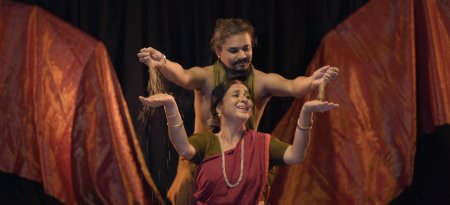 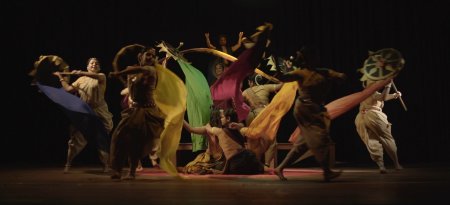 Shiva Shakti Photos courtesy: Sharmila Biswas Sharmila Biswas is a thinking dancer and choreographer; her latest productions have affirmed it time and again. The utterly unique and endlessly dynamic dance theatre 'Shiva Shakti' is a fantastic cutting edge performance told in dance, song and style. It is a blend of explosive physicality both in movement and in form with a search to connect the animate with the inanimate world. The production has found its genesis and grown at a time when everyone has been forced to introspect, cope and grow anew. The energy of the universe is a harmonious balance of the active and passive energies and have been given godly attributes and worshipped as Shiva and Shakti-the inanimate and the animate. In the cosmic cycle they come together again and again to bring universal harmony. The production directed by Sanjoy Nag and scripted by Shreela Debi begins with the 'Shivalinga' hasta mudra depicting Mahadev, the Supreme Being, set to a short alaap. Sharmila Biswas with an intense facial expression portraying Shakti, appears next as Mahadevi and surrounds him in Maya. With each 'pradakshin' she takes a different form and Shiva gets more and more enchanted. Thus the universe is created. The production gains momentum and so does the music composed by Srijan Chatterjee with progression to a fast paced bouquet of sargams. And passionately brilliant and dangerously fragile dancing follows with the atmospheric sacred music. Stunning diverse choreography, sprinkled with life-etched movements of a shifting world of dazzling imagery was intense and sensitive. Sharmila Biswas as the anguished tribal woman, depiction of the "panchgyanendriya" and the splash of subtle, beautiful colours and costumes provide an unusually gripping and elegant setting for the well-crafted production comprising of a team of eminent singers and musicians and exhaustively trained dancers. The cinematography was by Shinjini Paul. The program concluded with two slokas from the Madhurashtakam and a soul-stirring lullaby "Jo Jo Achyudananda Jo Jo Mukunda" in Telugu, loaded with Krishna's innate philosophy, his tatvam and the all-pervading nature of godliness by Dr. Pantula Rama with the violin support of M.S.N. Murthy. 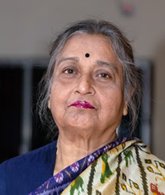 Dr. Nita Vidyarthi is a veteran critic of performing arts and writes on dance, music and theatre in leading publications. |